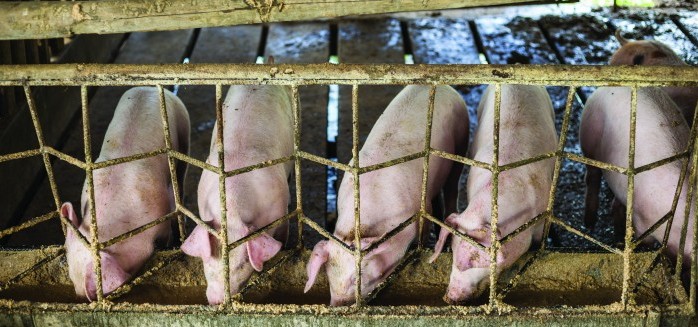Rapidly falling supplies and record pig prices are set to fuel further pork import demand from China, according to analysts at Rabobank.
More than a year on from China’ first recorded case of African swine fever, producers that have survived saw record prices in mid-August.
Live pigs reached ¥20.92/kg (£2.46/kg), representing a 13% increase since the start of the month, while wholesale prices were up 32% in the first half of August alone to reach ¥32/kg (£3.64/kg), matching 2011 and 2016 peaks, according to AHDB.
Further price hikes are expected as the year progresses due to lack of supply. ASF has swept across the whole country, with the latest official figures showing the Chinese pig herd had declined by 32% year-on-year by July.
In its latest global ASF assessment, Rabobank estimates the herd loss will reach 50% by the end of the year, although it believes this will equate to a 2019 productivity drop of 25% in 2019 due to the number of herds being liquidated. A further 10-15% drop in production is forecast in 2020.
“In the northeast and north, the regions first hit by the disease, the loss has been severe due to a lack of experience, a slow reaction and weak biosecurity,” Rabobank said. “In the south, which was exposed to the disease at a later stage, culling of infected herds and panic liquidation jointly contributed to a sharp decline.”
Restocking on a small scale so far this year has been largely unsuccessful, but large-scale restocking is expected next year as pig population density declines sharply, reducing the risk of infection.
Chinese pork imports increased by 12% in the first half of 2019, with Spain the biggest beneficiary, followed by Germany and Canada, while beef imports were up 50%. Frozen stock levels have reportedly been high, but the current high prices suggest these stocks will now be drawn down, prompting further import demand, AHDB analyst Bethan Wilkins said.
Rabobank forecasts that exports to China will top 3,000 tonnes in 2019 and 4,000t in 2020, compared with just over 2,000t in 2018. However, it predicts that the EU’s ‘cautious’ production response and relatively high prices will limit the volumes it exports to China.
The US is best placed to export pork to China, despite the ongoing trade war between the countries, while politics are also constraining Canadian exports to China. Brazil could increase its export volumes, Rabobank predicts.
However, pork consumption in China is falling, with other proteins filling the gap, notably poultry, which is forecast to see a 10% rise in production in 2019.
EU pork exports to China slowed in June, totalling 305,300 tonnes in June. While still up by 10% on the year, this was considerably less than the annual growth seen in April and May. This reflected industry reports at the time suggesting a slowdown in Chinese demand, as well as tight supplies in the EU.
But AHDB analyst Felicity Rusk said: “With Chinese pork prices now on a sharp upwards trajectory, it is likely that import demand will strengthen again, especially with the period of peak demand approaching.”
Customs figures show UK pork exports to China topped 32,692 tonnes in the first half of 2019, compared with 18,429 in the first half of 2018, a 77% increase, with offal exports also up.
Further outbreaks have been recorded in China in recent weeks, including four detected in Highway checkpoints for Animal Health supervision.
Myanmar became the seventh country to report ASF in mid-August, joining China, Vietnam, where production is forecast to fall by 15 to 20% in 2019, Mongolia, Cambodia, North Korea and Laos.




